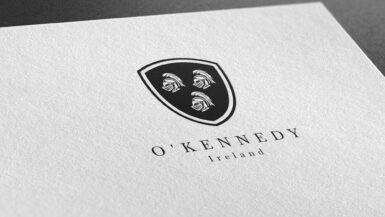Ireland’s rich and storied history has given rise to a diverse tapestry of surnames, each with its own unique geographic distribution across the Emerald Isle. This comprehensive guide aims to help you trace the origins and distribution of Irish surnames, providing valuable insights into your ancestry and helping you discover more about the land of your forefathers. Our guide is divided into several sections, exploring various aspects of Irish surnames and their geographic distribution.
The Origins of Irish Surnames
Gaelic Roots and the Clann System
Understanding the geographic distribution of Irish surnames starts with a look at their origins. The majority of Irish surnames have roots in the Gaelic language, which was spoken in Ireland long before the arrival of the Anglo-Normans. Gaelic surnames typically originated from the clann system, where members of a family group shared a common name to signify their allegiance and kinship. These surnames would often incorporate elements such as the ancestor’s name, occupation, or a physical trait.
Anglo-Norman and Viking Influence
In addition to Gaelic surnames, Ireland has also been influenced by the arrival of Anglo-Normans and Vikings over the centuries. Many Irish surnames have Anglo-Norman or Viking roots, with some being adopted directly from these settlers, while others were adapted to fit the Gaelic language and culture. These surnames can provide fascinating insights into the complex interactions between native Irish populations and their foreign invaders.
Categories of Irish Surnames
Patronymic Surnames
One of the most common categories of Irish surnames is patronymic surnames, which are derived from the name of a male ancestor. These surnames often begin with “Mac” or “O,” signifying “son of” or “descendant of,” respectively. For example, the surname “MacCarthy” means “son of Carthach,” while “O’Neill” means “descendant of Niall.”
Occupational Surnames
Another prevalent category of Irish surnames is occupational surnames, which are based on the trade or profession of an ancestor. Some examples of occupational surnames include “Breheny” (derived from the Gaelic word for judge), “Carpenter” (from the Anglo-Norman occupation), and “Ó Ceallacháin” (which means “descendant of the messenger”).
Toponymic Surnames
Toponymic surnames are derived from the name of a geographic location, usually a town or village, where the family originated. These surnames can offer valuable insights into the geographic distribution of Irish families, as they often indicate where a family’s roots lie. Examples of toponymic surnames include “de Burgh” (of the fortress), “Ó Conaill” (descendant of Conall, a common personal name), and “Ó Cuinn” (descendant of Conn).
Methods for Tracing the Geographic Distribution of Irish Surnames
Surname Distribution Maps
One of the most effective ways to trace the geographic distribution of Irish surnames is through the use of surname distribution maps. These maps display the frequency of a specific surname across various counties in Ireland, providing a visual representation of where your ancestors may have lived. Several online resources offer surname distribution maps, including the Irish Times Irish Ancestors database and the Public Record Office of Northern Ireland’s Surname Distribution Map tool.
Census Records
Census records are another valuable source of information for tracing the geographic distribution of Irish surnames. The Irish census records from 1901 and 1911 are particularly useful, as they provide detailed information about individuals and families, including their names, ages, occupations, and places of residence. By examining these records, you can gain a better understanding of where your ancestors lived and how their surnames were distributed across Ireland. The National Archives of Ireland’s Census Online Project provides access to these records, as well as earlier census fragments and surviving census substitutes.
Parish Registers and Civil Records
Parish registers and civil records can also be helpful in tracing the geographic distribution of Irish surnames. Parish registers contain records of baptisms, marriages, and burials within a specific parish, while civil records include birth, marriage, and death registrations. By examining these records, you can uncover information about your ancestors and their movements within Ireland. Websites such as IrishGenealogy.ie, RootsIreland, and Findmypast provide access to a wealth of parish and civil records, allowing you to explore the distribution of your Irish surname.
Case Studies of Irish Surname Distribution
The O’Sullivan Surname
One of the most common Irish surnames, O’Sullivan, offers a fascinating case study in the geographic distribution of Irish surnames. The name is derived from the Gaelic “Ó Súilleabháin,” meaning “descendant of Súilleabhán.” The O’Sullivan clan originated in the southwestern region of Ireland, particularly in County Cork and County Kerry. Today, the surname remains most prevalent in these areas, with a high concentration of O’Sullivans in the Beara Peninsula, where the historic seat of the O’Sullivan Beare clan is located.
The Murphy Surname
Murphy is another popular Irish surname with interesting geographic distribution patterns. Derived from the Gaelic “Ó Murchadha” or “Mac Murchadha,” meaning “descendant of Murchadh” or “son of Murchadh,” the Murphy surname has roots in several different regions of Ireland. The name is particularly prevalent in County Wexford, where the MacMurrough dynasty ruled as kings, as well as in County Cork, County Kerry, and County Down. This widespread distribution reflects the surname’s multiple origins and the movement of Murphy families throughout Irish history.
The Impact of Emigration on Irish Surname Distribution
The Irish Diaspora
The geographic distribution of Irish surnames has been significantly impacted by emigration, as millions of Irish people left their homeland in search of better opportunities abroad. The Irish diaspora has spread Irish surnames across the globe, particularly in countries such as the United States, Canada, Australia, and the United Kingdom. This emigration has, in turn, influenced the distribution of Irish surnames within Ireland itself, as some areas experienced higher levels of emigration than others.
Tracing Irish Surnames in Emigrant Communities
For those with Irish ancestry, tracing the geographic distribution of their surnames may involve researching emigrant communities in other countries. By examining records such as passenger lists, census records, and naturalization documents, you can uncover valuable information about your Irish ancestors and their movements across the globe. Online resources such as the Ellis Island Passenger Search, the National Archives of Ireland’s Emigrants Database, and Ancestry.com can assist in researching Irish surnames in emigrant communities.
Conclusion
Tracing the geographic distribution of Irish surnames is a fascinating journey into the rich history and heritage of Ireland. By exploring the origins, categories, and distribution patterns of these surnames, you can gain a deeper understanding of your Irish ancestry and the complex tapestry of cultural influences that shaped the Emerald Isle. With the help of surname distribution maps, census records, parish registers, and civil records, you can uncover the stories of your forefathers and their movements within Ireland and beyond.
Moreover, the impact of emigration on the distribution of Irish surnames highlights the importance of researching emigrant communities and their records. This comprehensive guide serves as a starting point in your journey to trace the geographic distribution of Irish surnames, helping you unlock the secrets of your ancestry and celebrate the rich legacy of your Irish heritage.






Leave a reply